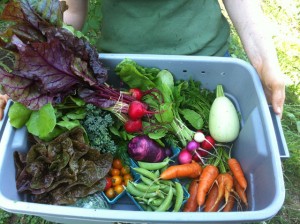Now that the winter has come and the rains have finally set in, it’s time to do two things:
A: Chill out and take a wee break
B: Perform statistical analysis of past income and production performance.
The chill out happened last week- we went on a road trip to the high desert in eastern Oregon, backpacking and camping our way across a landscape very similar to the one Clint Eastwood spent a lot of time riding in The Good, The Bad, and the Ugly. There’s a good 360 panorama here. We also stopped at a few hot springs along the way for some soaking (oregon has several dozen, most of which are unimproved and open to the public) and slept in a dry lakebed much like the ones they use in Nevada to test Air Force experiemntal vehicles and UFOs. I took a panorama of that too. I’d show you some flat pictures, but I really want you to click the panoramas, because a flat picture does NOT do the terrain justice.
 And statistical data? We’re just starting with that, but I have looked at the breakdown of income streams for this year. Most small acreage growers like us sell in a lot of different forms: farmers’ markets, CSA shares, restaurant accounts, grocery retailers. There are other options, but those are the main ones. We don’t sell to groceries yet (though I just talked to a friend who is the produce manager at one of the groceries in town, and we may be taking them pumpkins next week). We have one restaurant we sell to weekly, one we sell to sporadically, and one we are just forming a relationship with. Most of our business, as you can see from the graph, comes from the farmers’ markets. This is typical for nascent ag businesses, but after they get established, the market becomes secondary, more like an ongoing advertisement for the farm’s main sales channels. The big selling opportunity for most of us is CSA shares.
And statistical data? We’re just starting with that, but I have looked at the breakdown of income streams for this year. Most small acreage growers like us sell in a lot of different forms: farmers’ markets, CSA shares, restaurant accounts, grocery retailers. There are other options, but those are the main ones. We don’t sell to groceries yet (though I just talked to a friend who is the produce manager at one of the groceries in town, and we may be taking them pumpkins next week). We have one restaurant we sell to weekly, one we sell to sporadically, and one we are just forming a relationship with. Most of our business, as you can see from the graph, comes from the farmers’ markets. This is typical for nascent ag businesses, but after they get established, the market becomes secondary, more like an ongoing advertisement for the farm’s main sales channels. The big selling opportunity for most of us is CSA shares.
What is that? CSA = Community Supported Agriculture. There are a lot of ways to organize this, but the idea is that a group of people commits to partnering with a farmer, to support her financially in turn for receiving the best product that can be had by Americans in this day and age. By knowing your farmer, you know you’re getting produce free of chemicals, genetic modification, and substandard growing practices (which affect nutritional value as well as flavor) … and also contributing to the stability and reliability of your local food structure. In return, the farmer gets a stabilized income and living wage.

In practice, this is usually done by the farmer selling “shares” for a fixed price per week, paid in advance (so she can buy seed, inputs, equipment, etc.). Then, for the course of the season, the participants receive a weekly CSA box filled with awesome vegetable goodness. The contents vary, but they may look something like this. If the farmer has a good (or even mediocre) year, there will be an abundance of food. If there is a bad year, then there might be less, and the entire community participates in diluting the disaster… as mankind has done since the beginning of time, until the postwar era.
For us, CSA share income is really low right now, but we are going to expand next year. We currently only do one share (the ideal size for a farm like us would be 60 – 80 shares), and that share started as a favor to a friend. But it soon became apparent that this was the way to go- selling just eight shares would equal our average weekly market take, for example. Our challenge now is to grow in a sustainable way that doesn’t cause us to self explode- overexpansion is the #1 killer of new businesses. To sell shares, then not deliver a good box, would be a long-term black eye from which it would be hard to recover. So, our plan is to go up to about a half dozen or so next year. We’re not even going to advertise (much); we’ve already had nearly enough people come up to us and ask about CSA shares, that we can just serve them and still meet the 2013 expansion quota.
That’s about it for today. Hopefully next week I will have some interesting production statistics to share with you.

